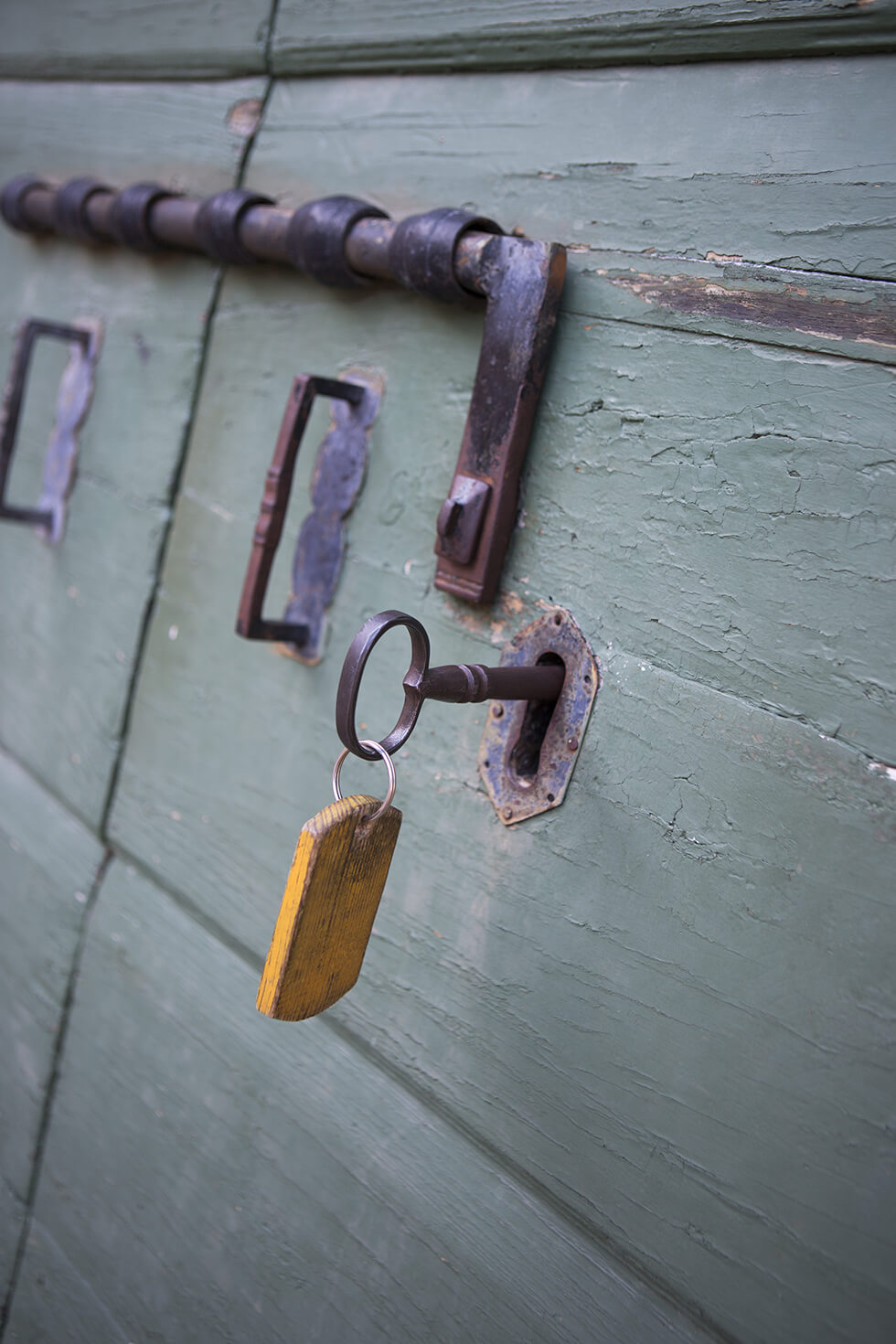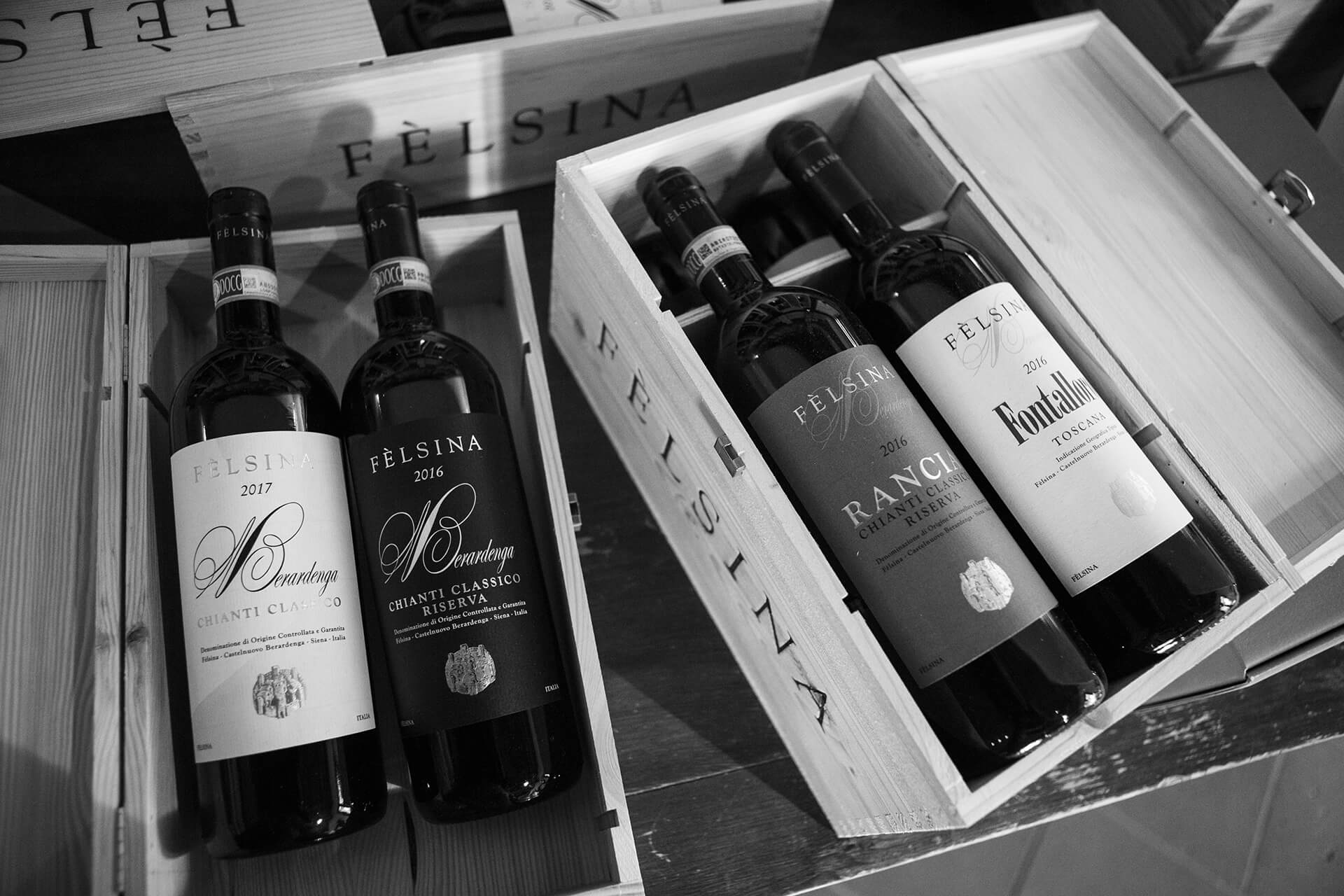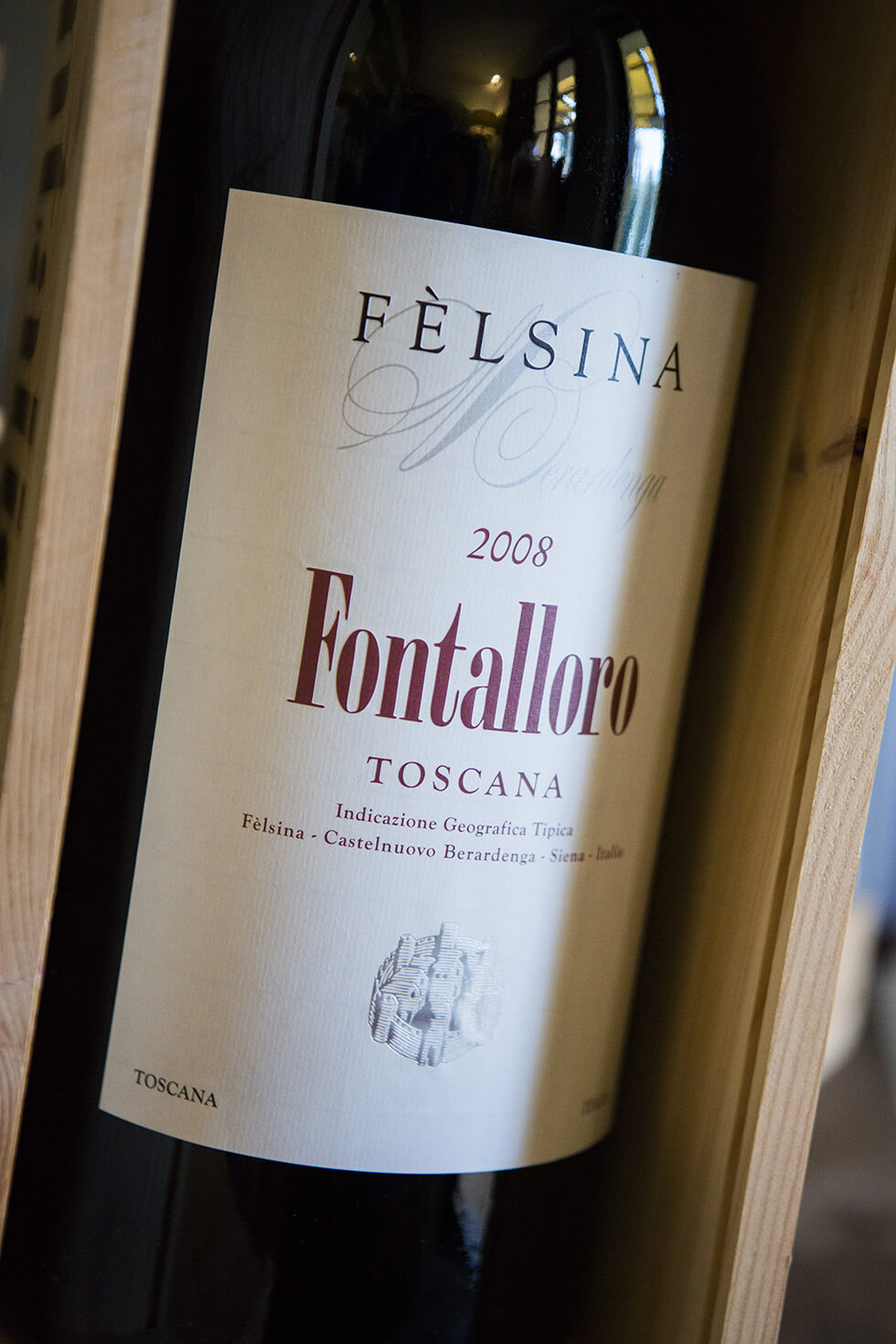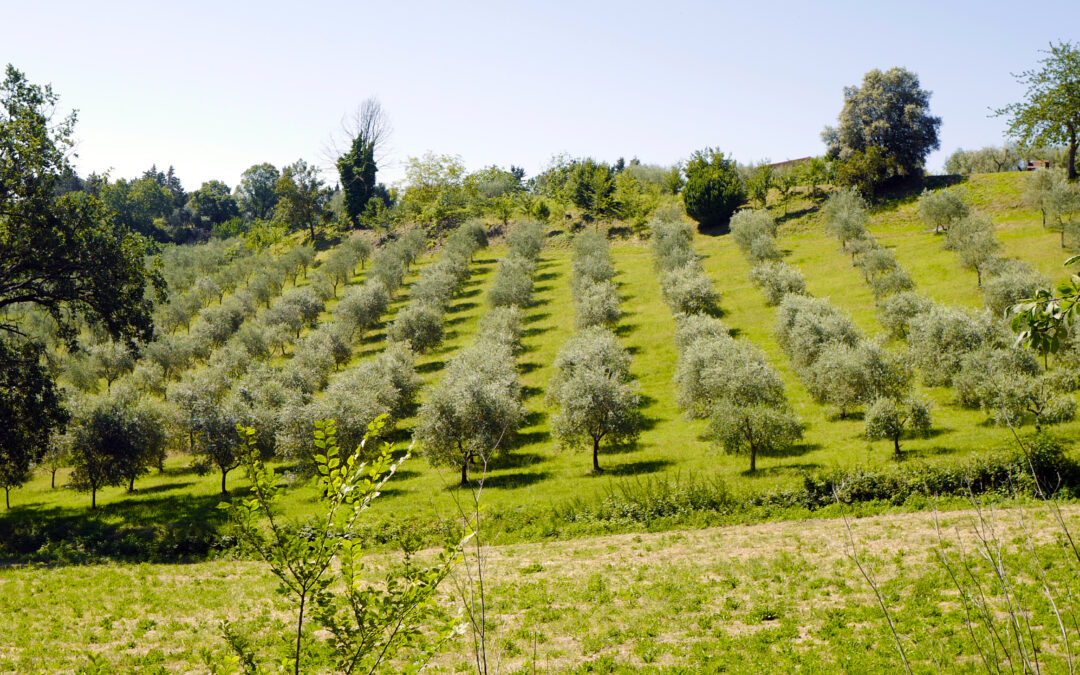FELSINA Winery.
Tuscany is the land of endless wine tours—thousands of wineries dot the region. Everywhere you look, there are vines. Considering that the Etruscans were the first to cultivate grapes nearly 3,000 years ago, it’s no wonder that so many wine-makers in this remarkable region have passed the test of time.
Tuscany’s rich soil, spring water, mild, humid winters and a climate at once sunny and breezy create an optimal environment in which to make wine. Although its wine production had its ups and downs over the centuries, one can say without a doubt that Tuscany is home of some of the most notable wines in the world: Chianti, Brunello di Montalcino, Nobile di Montepulciano, and Vernaccia di San Gimignano, not to mention an exclusive new class of wines known as “Super Tuscans”—Sassicaia, Ornellaia and Tignanello from Bolgheri, which are sold at high prices in exclusive wine shops around the world

Tuscany’s rich soil, spring water, mild, humid winters and a climate at once sunny and breezy create an optimal environment to make wine.
Acquainting yourself with the rich plethora of Tuscan wines could take a lifetime–or longer. The region’s winegrowers produce 26 million cases of wine each year. A number of wines stand out. Here are just a few: Morellino di Scansano and Bianco Pitgliano, both from the Maremma region; Monteregio from the Massa Marittima; sweet wines from Elba Island, including Ansonica and Aleatico; and vintages from Montecucco, Carmignano, Luni, and Montecarlo. Needless to say, this is a short list. There are many, many more amazing wines to experience.
The wine I’m most familiar with is Chianti. Afterall, I grew up on a farm that produces wine in one of the seven sub-areas of the Chianti region, Colli Senesi. Memories of lunches or dinners at my family’s house always included a fiasco of red wine on the table. Although the iconic squat bottle in a straw dress has been replaced by the slim bordolese, the wine tastes almost the same. My brother, a wine-maker, uses a recipe in which the local Sangiovese grape at around 80%, with the remainder divided between Canaiolo and Malvasia Bianca grapes. My family’s wine is well regarded, completely organic and so much in demand that, unfortunately, our small production facility cannot satisfy all the requests we receive from the guests staying in our farmhouses.

When I have to recommend local Chianti wineries to my clients, I always include Felsina, an Etruscan term that translates as “hospitable place’’ and “land of light.” Both meanings suit the winery perfectly. Just 15 minutes south of Siena, Felsina is a farm just outside the town of Castelnuovo Berardenga, which borders two territories: Chianti, with its rich soil ideal for vineyards and olive groves, and Crete Senesi, known for the its clay-like soil and truffle hunting. Felsina, in accordance with its etymology, is a place rich in harmony, one of those fattorie that introduced innovations in the wine production process slowly, always respecting local Tuscan traditions.
A white road bordered by a seemingly endless line of cypress trees standing like sentries on one side, and olive trees on the other, leads you to the winery. The old cellars were once horse stables and have since been tastefully restored.

Under brick ceilings lie rows of modern stainless glass steel barrels that allow for more precision in the winemaking process. As the guide walks you through numerous rooms, recounting the history of its wine, you feel pulled gently into a 3,000-year narrative—an evolutionary process unfolding slowly and seamlessly, with no real sense of fracture between the old and the new.
Guests are allowed to visit Felsina’s vinsantaia, the attic where the sweet Tuscan dessert wine Vinsanto is aged. The Poggiali family, owner of Felsina Estates since 1966, has created a modern and competitive wine company with the support of top industry experts, starting with the oenologist Franco Bernabei. The farm is managed expressly to preserve its ecosystem and the natural environment. The beautifully manicured plantings of Sangiovese vines are complemented by a glorious mix of sunflowers, sorghum, millet and medical herbs— biodiversity in a luminous environment full of vibrant colors, sun and a soothing breeze.
The quality of Felsina’s wines never falters. They are elegant and balanced with medium and full-bodied choices. These wines are all about the local Sangiovese grape and its selected clones that lend different wines a wide spectrum of aromas and nuances.
Felsina is a place full of harmony, one of those farms that introduced innovation in the wine-making slowly, always respecting local Tuscan traditions.
In addition to its Chianti Classico, guests can choose from among other reds such as Fontalloro, Rancia, Nero di Nubi, Colonia, Berardenga, Berardenga Riserva, and Maestro Raro. I Sistri, a fresh and fruity Chardonnay, is ideal for an outdoor summer lunch or dinner. Felsina also produces three kinds of Spumante: brut, millesimal and rosé—a treat for anyone, like me, who loves sparkling wines. Like all farms in the area, Felsina makes excellent olive oil.
They produce Moraiolo, Pendolino, Raggiolo, and Leccino with a single variety of olive whereas Berardenga is a mix of the four local varieties. With a reservation, you can taste Felsina’s products, including a light meal prepared by their cook, Antonella. The marriage of wine and local food offers an ideal, quintessential experience of the very best aspects of Tuscan culture.





